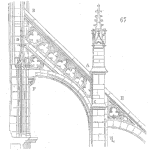
It always seems there are more red lights when I’m running late.
This comment and others similar to it caught my attention lately. Is it just Murphy’s Law or something else?
There is an element of luck or chance in many events during our daily lives. The same is true when producing products and the resulting reliability. A lot has to go right for the product to work for the customer.
When something isn’t going as expected, we have a comparison that gains attention. If the lights are red more often, in theory, when I’m running late, maybe the lights are not turning red more often, it’s just that we notice.
For product development, it’s noticing the items that are going well and failing that matter. As reliability professionals, we need to continue to practice being aware of what is expected and what actually happens.
Setting expectations
Setting clear reliability goals is like establishing how long it takes to drive across town. We frame the expectation that permits us to make an ongoing comparison. If we are finding many defects and a high failure rate, or we start late for the drive across town, we have the opportunity to learn. We may be able to adjust and reduce field failures. For the drive across town, just relax, and you will get there when you get there — and next time allow a little more time.
We frame the expectation that permits us to make an ongoing comparison. If we are finding many defects and a high failure rate, or we start late for the drive across town, we have the opportunity to learn. We may be able to adjust and reduce field failures. For the drive across town, just relax, and you will get there when you get there — and next time allow a little more time.
It is the setting of expectations that let’s use do the comparison. Without goals, we do not know if the product is reliable enough or not. Without specific goals, most of the product testing produces results that are difficult to use effectively.
From component selection to warranty accrual we have to set expectations. Adjust along the way as needed.
Blinded by expectations
Another issue of how we perceive what we expect is not seeing what we do not expect.
This issue came to life for me as a bicycle rider. Riding along the coast one day, a car drifted into a pullout, forcing me off the road into the pullout and into a planting of bushes. They never saw me. They were looking for cars in the pull out (or the view) and certainly not me on a bicycle.
I’ve heard similar stories from other cyclists including motorcycles. When driving, we look for oncoming traffic — like other cars or trucks. A thin vehicle just doesn’t register. We don’t see it.
Setting reliability goals and ignoring information that doesn’t support the expected results can be done unconsciously — you just don’t see it.
Keep in mind that during development a failure is valuable. It provides evidence to support product reliability improvement.
When evaluating prototypes plan the testing to include not only the high risk or expected failures but also the surprises. This can be difficult and very valuable.
Summary
The world is full of chance events and encounters. We all make comparisons between what we observe and expect. Sometimes it becomes memorable and others we simply don’t see. Be conscious of these filters will help us be professional reliability engineers.
Leave a Reply